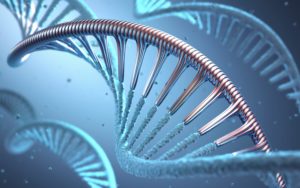While epigenetic modifications can leave their signatures on our genome, our genome can also leave its signature on our epigenomes. Genetic variants in epigenetic regulatory genes often cause disorders characterized by abnormal growth and intellectual disability. The Polycomb repressive complex-2 (PRC2) complex is a core regulator of chromatin structure through methylation of H3K27. EZH2, EED, and SUZ12 encode the core components of PRC2, variants in each gene are associated with specific overgrowth syndromes. Diagnosis of these conditions is challenging, with the phenotypes from variants in these key genes being highly variable and overlapping.
The laboratory of Rosanna Weksberg at SickKids in Toronto, Canada has previously found that syndromes caused by variants in epigenetic regulators are associated with gene-specific, consistent patterns of DNA methylation called “DNA methylation signatures”. They have shown that these signatures are a powerful tool to classify variants with uncertain significance in their respective genes as disease causing or not. They wanted to determine if pathogenic variants in EZH2 that cause Weaver syndrome generate a DNA methylation signature, if it could be used clinically, and to what extent it overlaps with other PRC2 complex genes. Using the Illumina EPIC array, they investigated DNA methylation in Weaver syndrome cases vs. control blood and utilized enzymatic assays, protein modelling, and pyrosequencing validation. Here’s what they found:

- Pathogenic EZH2 variants show a DNA methylation signature consisting of 229 CpG sites
- A machine learning model trained on the signature can classify a separate testing cohort of EZH2 variant samples and controls correctly in all cases
- The model can identify somatic mosaicism: An unaffected father of a child with Weaver syndrome carrying a missense variant in EZH2 had an intermediate model score. Further testing found that the father has somatic mosaicism of the variant, with the child inheriting it from him
- Pathogenic variants in EED and SUZ12 classify positively, indicating substantial DNA methylation overlap between these conditions.
- One EZH2 missense variant shows a DNA methylation pattern opposite to other cases; the patient has growth restriction (rather than overgrowth). An EZH2 enzymatic assay confirmed this variant to be a gain-of-function.
Lead author Sanaa Choufani shares “Our study demonstrates that DNA methylation signatures provide a more detailed functional output of variant pathogenicity than ever thought before. It expands the scope of the utility of DNA methylation signatures in the diagnostic realm.”
Get the full signature in the American Journal of Human Genetics, April 2020.




